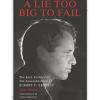Answers and Questions
The Unsolved Murder of JFK’s Mistress

Perhaps the most notorious unsolved murder of a woman in America in the 20th century was the slaying in our nation's capital of Mary Pinchot Meyer on Oct. 12, 1964. While taking her daily walk on a towpath in a public park in Washington, D.C. in broad daylight, Meyer was suddenly and violently seized from behind by a powerful attacker who, after a short struggle, shot her twice with a handgun, execution-style, at very close range. The first shot sent a bullet into the left side of her head about two inches in front of the ear. It inflicted a lethal wound which would have soon killed her had it not been for the fatal second shot, fired from above her right shoulder a few seconds later, which sent a bullet through her chest cavity into her aorta and killed her instantly. The shooter was an expert marksman and unusually fired the first shot with one hand and the second shot with the other hand. An ambidextrous murderer so accomplished that the first of the shots was a headshot and both shots were mortal. Despite thorough, extensive searches by large numbers of police officers, the .38 cal. murder weapon was never found.

Newspaper photographs of the crime scene depict numerous police officers and men in trench coats standing around the lifeless body of Mary Meyer lying on its right side on the ground. Nina Burleigh (who, as explained later, has written a biography of Meyer) tells us that the news photographer who took the pictures "found it odd that there were so many men in suits at the crime scene and that journalists were kept at such a distance."
A diminutive black high school dropout and day laborer of limited intelligence, 26-year old Ray Crump, a married man with five children, who was arrested in the park minutes after the murder, was tried for the crime but acquitted by a jury after a 10-day trial in July 1965. If convicted, he almost certainly would have been sentenced to death. Viewing the trial in its totality, the verdict of not guilty was amply justified. The prosecution's claim that Crump was the killer rested entirely on weak circumstantial evidence and was full of holes. There was no murder weapon. There was no ballistics, blood, hair, semen, fiber or other scientific evidence linking Crump to the crime. Nearly every important prosecution witness was discredited, sometimes even demolished, on cross-examination. Some of the police witnesses suspiciously tailored their testimony to assist the prosecution. Prosecutors proved beyond a reasonable doubt that Mary Meyer had been murdered, but failed to prove that Ray Crump was the murderer.
Having been duly tried and found not guilty, Ray Crump was legally innocent of Meyer's murder. But was he factually innocent? Or was he instead one of the small number of factually guilty persons who nevertheless for one reason or another are found not guilty at their trial?
While Crump's innocence cannot be proven conclusively, on the whole it does appear that it is practically certain. Ray Crump was not physically strong enough to overpower Meyer, who was his size and weight. He did not use or possess firearms. He lacked firearms' proficiency. If Crump had fired two shots into the victim from near point-blank range and had grappled with the profusely bleeding victim, then why was it, as Janney notes, that the FBI crime lab "had failed to find any forensic evidence that linked Ray Crump to either the murder scene or the body and clothing of Mary Meyer"? And why were there "no traces of Mary Meyer's blood, hair, fibers or saliva found on Ray Crump"? And how do we account for the missing murder weapon? Isn't the most plausible explanation that someone other than Crump killed Meyer and then escaped carrying the weapon?
Answers Offered

Two books offer answers to the question of who killed Mary Meyer. The first, a biography, is Nina Burleigh's A Very Private Woman: The Life and Unsolved Murder of Presidential Mistress Mary Mayer, published in 1998. Burleigh thinks, notwithstanding his acquittal, that Ray Crump did it. The second book is Peter Janney's Mary's Mosaic: The CIA Conspiracy to Murder John F. Kennedy, Mary Pinchot Meyer, and Their Vision for World Peace, published this year. Janney thinks that Meyer was not slain by Ray Crump; she was the victim of a CIA contract killing.
In assessing whether Burleigh or Janney is closer to the truth, we are fortunate in that currently we know–due in large part to facts uncovered by Burleigh, Janney and other investigators–far more about the Mary Meyer murder case than was known at the time of Ray Crump's murder trial. We now know, for example, that:
- Meyer was a close friend, a trusted advisor and also the mistress of President John F. Kennedy during the last two years of his life.
- Meyer kept a personal diary, now missing, which is believed to have contained private information about her relationship with Kennedy and (perhaps) damaging information about the CIA.
- At the time of her death Meyer had, after a 14-year marriage, been divorced for six years from Cord Meyer, a high-ranking CIA official who managed the agency's clandestine services division. (Contemporary newspaper accounts of the murder usually described Mary Meyer's ex-husband as a "government employee" or an "author.")
- The night of the murder James Jesus Angleton, the legendary spook in charge of the CIA's counterintelligence division, entered Mary Meyer's home and took away various documents never seen again, including Meyer's diary. He made a second surreptitious entry into the house the next morning.
- In the weeks preceding her murder Meyer told friends that unknown persons had been stealthily entering, or attempting to enter, her home.
- A covert intelligence agent pretending to be just an ordinary citizen gave damaging testimony against Ray Crump at Crump's trial by claiming that while jogging on the towpath shortly before the murder he had passed both Crump and Meyer and that Crump apparently had been following Meyer from a distance. This individual, an important prosecution witness, testified under oath that his name was William L. Mitchell, that he was a U.S. Army lieutenant, and that he taught mathematics at Georgetown University. (A July 27, 1965 newspaper article about Mitchell's trial testimony was headlined, "Teacher Says He Passed by Mrs. Meyer." The same article described Mitchell as "a Georgetown University mathematics teacher.") In fact, however, this was not the true name of the witness, whose actual identity remains unknown; whoever he was, he was not in the Army, and he was not a teacher at Georgetown. "Mitchell," who testified that his home address was an apartment building now known to have been a CIA safe house, disappeared from history shortly after the trial. He left no forwarding address, and there are no official records, including military records, showing that he ever existed. "Mitchell" had to have been an undercover intelligence operative, presumably with the CIA. (Janney, it should be noted, thinks "Mitchell" likely was the assassin hired by the CIA who shot Meyer.)
- "Mitchell's" testimony about Crump was almost certainly false.
Questions Remain
Why, you may inquire, would the CIA have been mixed up in Mary Meyer's death? There are many theories. One of the most plausible is that Meyer knew that the CIA had something to do with JFK's assassination, that she saw the CIA involvement was being covered up, that she was appalled at the sorry investigation by the Warren Commission, that she was shocked by the superficiality of the Warren Report (Meyer was murdered two weeks after the Report was released), and that she planned to go public with what she knew. (Why, you might now ask, would the CIA involve itself in slaying a president? This question is beyond the scope of this article. However, the theory that the CIA was behind the JFK assassination is not novel or absurd, and there are numerous well-researched books and articles in support of the theory. The CIA was well-versed in assassinating people it wanted eliminated. That the CIA in the 1950s and 1960s assassinated, or attempted to assassinate, various foreign leaders and officials is an established fact that was not publicly known at the time of Mary Meyer's murder.)
Nearly 50 years after it occurred, Mary Meyer's murder is unsolved. However, a few of the basic questions about the murder have now been satisfactorily answered. First, Ray Crump was not the murderer. Second, the murder itself was not a robbery or rape attempt gone bad, but a well-executed, professional hit—a rubout by a trained assassin. Mary Meyer, like her lover John F. Kennedy, was assassinated.
On the other hand, most of the fundamental questions about Meyer's murder remain. What was the reason for the murder? Who was "William L. Mitchell"? Why would a secret agent for an intelligence agency, disguising who he really was, go to the trouble of giving false testimony designed to put Ray Crump in the electric chair? Also, since police searching the park shortly after the murder spotted an unidentified black man hiding in the woods who then eluded capture and was never seen again, it must be asked: Who was this mysterious man? Finally, and obviously, and most importantly of all, if this mysterious man was not the murderer of Mary Meyer, then who was?
Editor's Note: The author, a law professor at the UGA School of Law for the past 40 years, will soon retire from teaching (but not from research and writing). This is his 251st scholarly publication, and his 74th article for Flagpole.












comments